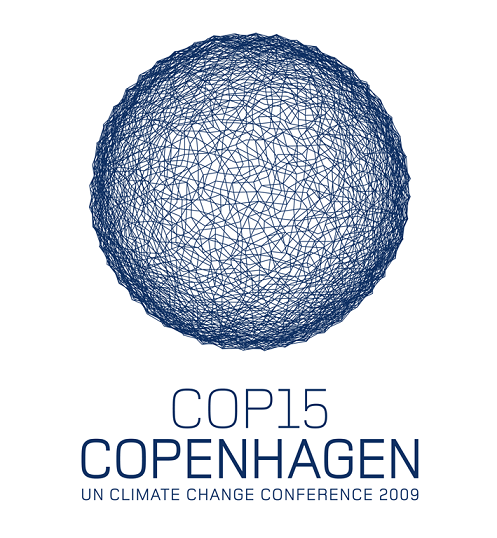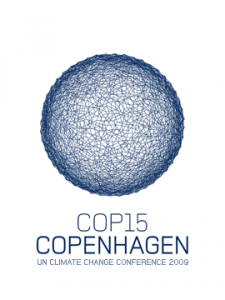The city of Copenhagen will have an environmentally friendly bus for the delegates of the UNFCCC, running from the 6t h until the 19th of December 2009. This is one day before and one day after the conference. The COP15 Shuttle Bus offers transportation for the delegates from hotels within the city center to the conference area. The shuttle bus is not only an environmentally friendly form of transportation, but it also acts as a moving advertisement to raise awareness about the conference and global warming.
h until the 19th of December 2009. This is one day before and one day after the conference. The COP15 Shuttle Bus offers transportation for the delegates from hotels within the city center to the conference area. The shuttle bus is not only an environmentally friendly form of transportation, but it also acts as a moving advertisement to raise awareness about the conference and global warming.
Tags: climate change, COP15 Resources, Dickinson College, Grace Lange, Kyoto to Copenhagen, student-citizens
On November 18th, China and India, the world’s fastest growing countries, both in population and GHG emissions, signed a five-year agreement of cooperate on climate change issues. In the grand schemes of things, this is very large, strategic move. The agreement strengthens the ties between these two countries before, during and after the Copenhagen negotiations. According to the agreement, India and China will focus their cooperation on increasing energy conservation, energy efficiency, renewable energy and forest management within their countries. Together, they will strongly support provisions to ensure Annex 1 countries increase funding and technology transfer to the developing world.
This agreement also affords the two countries some leverage at the upcoming negotiations. Indian Minster of Environment and Forest Jairam Ramesh says, “Both India and China are collaborating to ensure a fair and equitable outcome at Copenhagen… There is virtually no difference in Indian and Chinese negotiating positions.” Together India and China have some serious negotiating power. A top UN scientist, Rajendra Pachuari suggest that India and China have the ability to “shame” richer countries into agreement by stepping forward and taking more responsibility than the world expects them to. Developing countries like India and China historically have called on Annex 1 countries to lead emissions reductions by taking responsibility for their historically high GHG emissions. However, developing countries are at great risk from climate change and realize the need for global cooperation to address the issue.
Read more at:
Gaurav Singh and John Duce. China, India Sign Climate Change Cooperation Accord (Update 1). Bloomberg.
Rie Jerichow. India and China sign major agreement on combating climate change. (21/10/2009)
Marianna Bom. IPCC: India and China have “moral force.” (30/10/2009)
Tags: China, climate change, coalitions, Danielle Hoffman, India, technology transfer

With the Copenhagen conference just over a month away, there have been a number of developments—both positive and negative—towards achieving a legally binding climate treaty that will guide global action on climate change. Particular attention has been given to the issues of targets and financing. At the recent European Union Summit in Brussels, European leaders advanced discussions on how to provide funding for climate action in developing countries. 27 of the world’s richest nations have backed global funding to tackle climate change in developing countries. But the amount of funding deemed adequate has been widely contested. The European Commission has called on the EU to contribute a share of up to €15 billion, but many civil society groups are calling for at least €35 billion in annual public funding from the EU by 2020. While no actual commitments were made, climate funding options are on the table leading up to Copenhagen. Starting tomorrow, negotiators from nearly 180 countries will be working to draft an agreement to replace the 1997 Kyoto Protocol at UNFCCC Barcelona Climate Change Talks. While some believe not enough advances have been made to conclude a treaty in Copenhagen, others remain optimistic and highlight these recent developments which will work as a framework for the basis of the next treaty. These developments (and others) are discussed by Janos Pasztor, Director of the UN Secretary-General’s Climate Change Support Team.
Tags: climate change, COP15 Resources, Financing, Preliminary negotiations
Despite concerns that the US may enter the climate negotiations in Copenhagen this December with no laws in place to decrease emissions, the EU has remained optimistic. Next week in Spain, they will be working hard to come to an agreement on how to fund the environmental movements of developing countries, budgeting almost $150 billion annually to support improvements in technology and searches for cleaner sources of energy. Though they seek to establish some basic agreements on how to cut emissions, they are wary to establish any legally-binding deals for fear of “pre-empt[ing] further negotiations” in Copenhagen. Though the recession has drawn attention away from environmental concerns, delegates remain determined to come to an effective agreement in 2009, and not to push the decisions back to 2010 or later. “Time has almost run out,” noted Yvo de Boer, head of the UN Climate Change Secretariat. “In Barcelone, all countries must step back from self interst and let common interest prevail.
European leaders edge closer to agreement on global climate change funds
In the summer of 2006 my hometowns of El Paso, Texas and Juarez, Mexico saw something they had not seen before: torrential rains that lasted for about a week.
As a desert environment, the region tends to have long periods of drought with a short-lived periods of intense precipitation in the summer months. For example, in an average year, it will not rain for a few (or many) months and then one day there will be a torrential downpour of biblical proportions. But these will usually last for no more than a few hours, sometimes even minutes.
That week, the rain did not stop.

As a place not used to dealing with precipitation, El Paso is ill-adapted to rain (i.e. it has terrible drainage systems). As a result, there was widespread flooding that caused a lot of infrastructural damage. The interstate highway that connects the city was completely submerged, leaving people stranded far from home.
El Paso’s neighbor to the south, Ciudad Juarez, Mexico, saw even worse damage to infrastructure, livelihood, and human lives. Many roads were undrivable afterwords, people’s homes were destroyed, and lives were lost.
Having experienced such drastic changes in climate has made me worry about the future unanticipated effects of global warming on communities across the globe. As Luers et al. of the Union of Concerned Scientists point out in their report “How to Avoid Dangerous Climate Change: A Target for U.S. Emissions Reductions,” no matter which road we take, GHG (Green House Gas)emissions must be “reduced between 40 and 50 percent from 2000 levels by 2050,” in order to avoid catastrophic climate change. The more realistic and gradual of the plans would have the U.S. peak in its GHG emissions in 2010; next year!
In light of this, we need to make vast and sweeping changes in our consumption of fossil fuel energy pretty rapidly. The more generous time frame would have us peaking at 2020 but we would have to reduce our consumption after that very rapidly. Such drastic changes would be unsettling and for the most part, unpleasant.
So how do we achieve such drastic reductions in emissions in less than ten years? In order to achieve long term and meaningful reductions, we need to change the basic energy infrastructure and build new systems of renewable energy to make them readily accessible for everyone when the time comes. But until those systems are in place, what can be done to encourage conservation?
A number of economic incentives are discussed in Jane A. Leggett’s “Climate Change: Current Issues and Policy Tools” 2009 CRS Report for Congress. The two main ones are GHG fees/carbon taxes and cap-and-trade. I believe a tax for consumers and a cap-and-trade system for producers could, if well thought-out and implemented, take us a long way in reducing our total emission of GHGs.
Ideally there would be a system in place where individuals could track their own emissions and make adjustments accordingly, in order to save money. Energy efficiency could be maximized by people trying to reduce the amount they pay. Such an immediate and personal way of making people think about their own emissions would benefit us in the long run, even if people would be initially upset about the tax.
The tax revenue could then go into building infrastructure for locally adequate renewable resources. For example, El Paso has over 310 (intensely) sunny days a year. Why not take advantage of that with extensive installation of solar panels?
It is necessary to keep in mind the cost of our actions to the environment (our only home), and internalize those costs to ensure a good quality of life for future generations.
————-
Here is a video of some of the damage the 2006 flood caused:
The following is a video on a more radical way of cooling down the earth through geoengineering. Of course there are some consequences of using such techniques, such as drastic climate change (cooling/warming) which could cause many problems, as well as the problem of acidification of oceans. However, it is interesting to see the possibilities and tools that are available.
Tags: carbon tax, climate change, floods, Mexico, solar energy, Texas

Your Comments